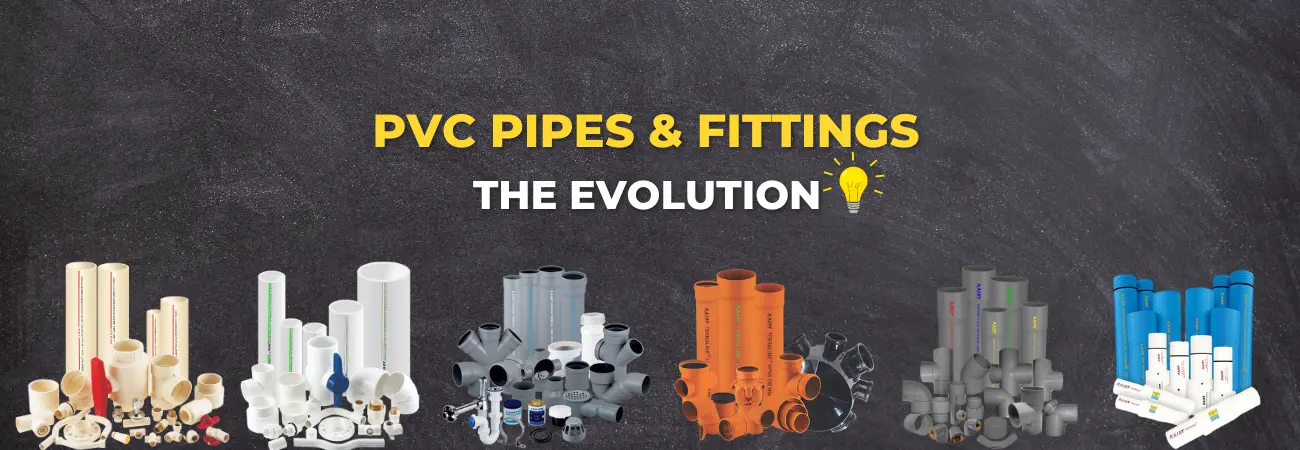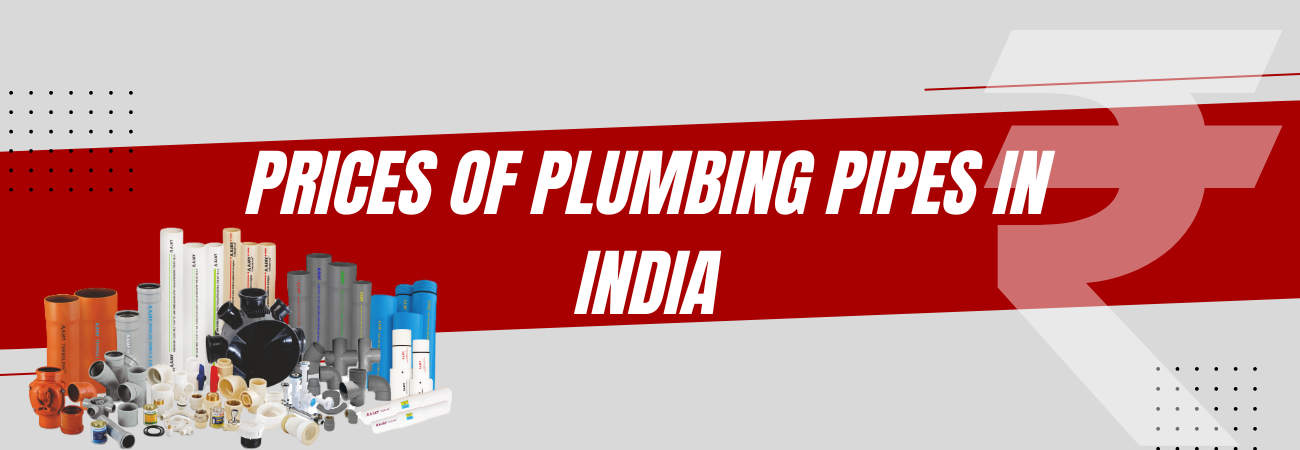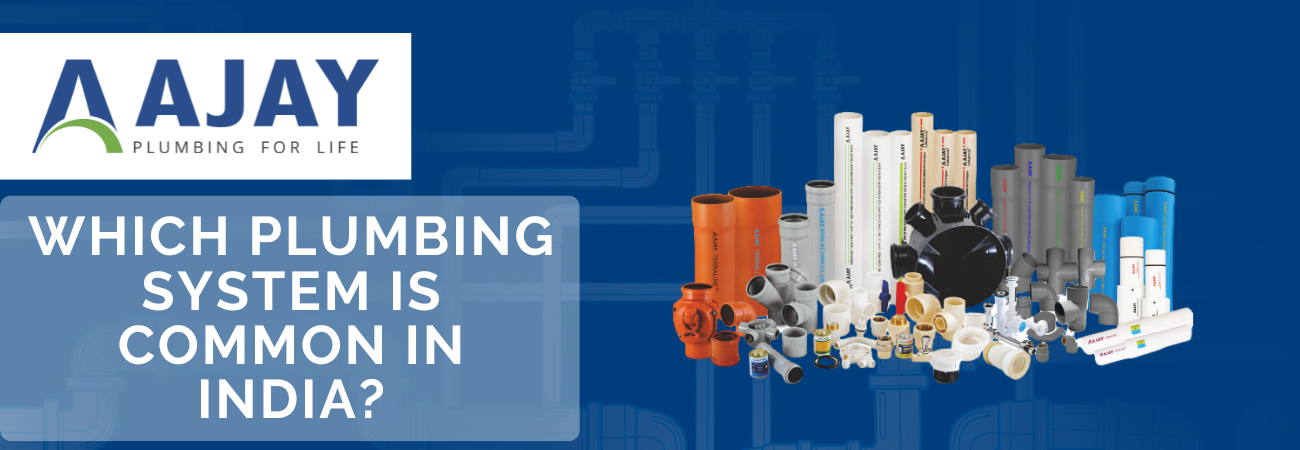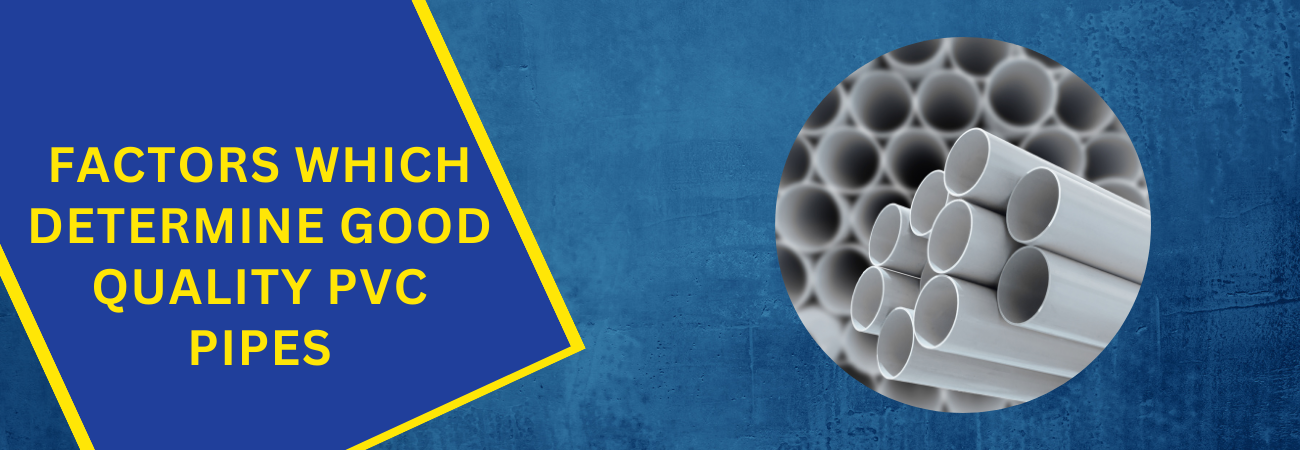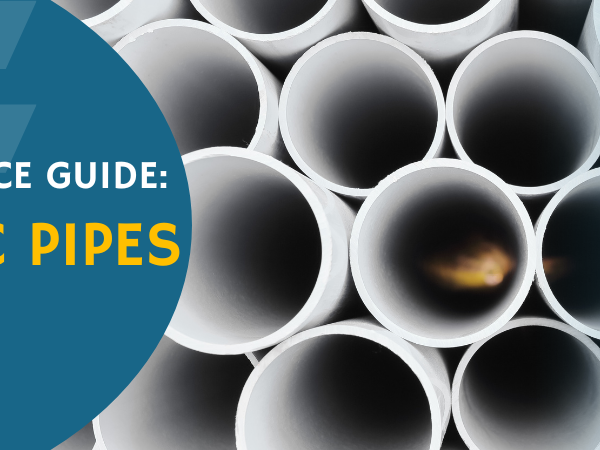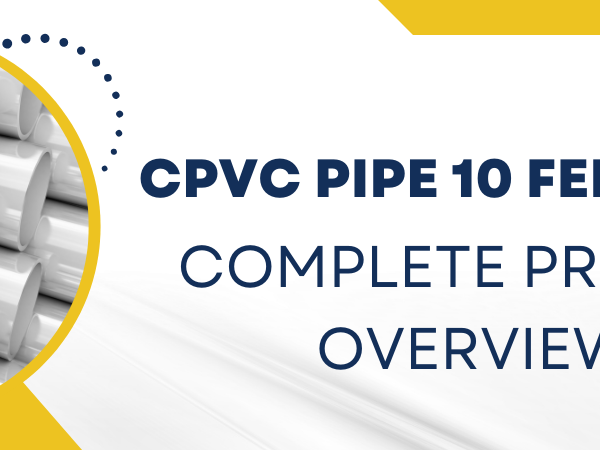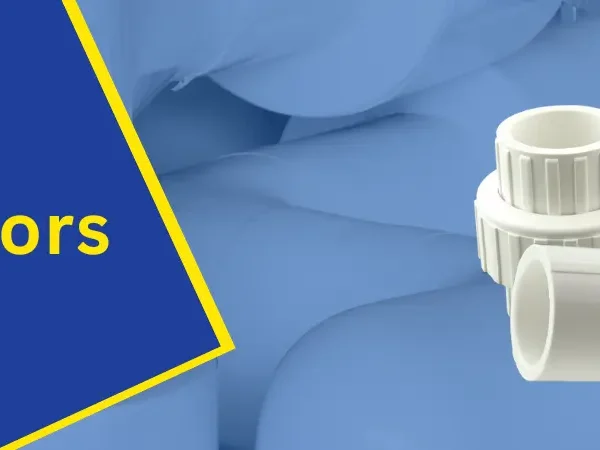PVC Pipes
If we were to make a living in a space without anything made of PVC, then it may become quite difficult in 2020, as most of things are one or the other way consumes PVC. So what is PVC actually? The term PVC stands for Polyvinyl Chloride by which PVC means that it is a polymer or form of hydrocarbon. The history of PVC has been quite unusual yet phenomenal. PVC was first created by a lesser known German Chemist named Eugen Baumann in the year of 1872, but he didn’t thought it to be a useful product and as a result never applied for its true inventor or ownership. PVC couldn’t find any patent until another German Friedrich Klatte who had moderated sunlight to make effective polymerization of vinyl chloride. However again, people found no use of it although now PVC got patented by Friedrich. It was in the 1926, when American researcher Waldo Lonsbury Semon made a form of plasticized polyvinyl chloride that is abbreviated to PVC. The first thing he built out of PVC was heels for shoes and balls for golf. Who would have known that once with no users, PVC will dominate the market later in our ages with a plethora of applications? Commonly in our times, PVC is playing an essential role in our everyday life. PVC applications can now a days, be found in raincoats, flooring and packaging sheets, electric wires, domestic appliances, pipes and fittings, surface coatings, tiles, paints. PVC have found a major market in the electrical, agricultural, industrial and plumbing and drainage sector as well because it was processed and with advance technological knowledge, PVC was turned into several varieties that are consumed by industries and factories at huge volumes.
PVC is considered to have excellent finishing and hence is suitable to carry water or liquid form of industrial fluids to the machinery. The diverse application of PVC made it to cultivate into other forms as well such as CPVC and UPVC which also find its application in domestic and industrial purposes. All the forms of PVC including CPVC and UPVC are used at large scale to manufacture pipes and fittings for domestic and industrial purposes. Such was the evolution of PVC which has found its presence in almost every home, society, offices and industries around the world. Hence it can be concluded that PVC pipes and fittings are widely used in water supply network in our home and also for its discharge or outlet.
Existing types of Water Supply Pipes and fittings
Pipes and fittings have wide range of applications such as for transporting gas, water (Cold and Hot), and different industrial liquids or fluids one location to another in a secure way. The proper application of pipes and fittings depend on their usages and working circumstances that will determine its suitability, performance and cost-effectiveness. Below listed are existing types of Pipes and Fittings that are in use in both domestic and industrial sectors.
- Cast Iron Pipes: Made with Pig-Iron, the Cast Iron pipes and fittings are quite resistant to corrosion and exposure and hence they are widely used in the water distribution and management system in cities and towns. They are expected to last up to 100 years but over-exposure to chemicals, sunlight may affect the longevity of the Cast Iron pipes and fittings. Although they are blended with a bituminous compounded for added resistance to corrosion yet they come with wide variety of thickness according to different level of weight and pressure. Cast Iron pipes and fittings require skilled labors for complex joints and couplings; however they are quite cheap and economical for large cities and towns.
- GI Pipes: GI Pipes stands for Galvanized Iron Pipes which are also used widely for transporting gas, liquid or drinking water in our homes. GI Pipes are made out of mild sheet of steel which can and galvanizing it with Zinc gives extra resistance to rusting and corrosion. However alkaline and acidic water degrades the quality of the GI Pipes and are often not used where the need is to carry alkaline or acidic water. They are economical and also less heavy than Cast Iron pipes.
- Steel Pipes: Steel pipes are also for water or gas supply from one spot to another. These kinds of pipes are produced using steel sheets. Steel pipes have welded joint along the length which isn’t evident from first notice but bigger version of steel pipes come with visible bolted or welded joints. They are also processed with Zinc solution to add extra resistance to corrosion. The life of steel pipes is usually around 25-50 years and they are also affected by excessive alkaline and acidic water.
- Copper Pipes: Copper pipes are usually made of smaller circumference. Since Copper is an element that doesn’t allow rusting on its surface, so these kind of pipes have endurance and long life but using copper may incur heavy costs as copper is quite expensive in nature. These sorts of pipes are exceptionally used to transport hot water or steam. They don’t get twisted or sag even at high temperature.
- PVC Pipes: Made of plastics or scientifically term it with PVC, these kinds of pipes are the most widely used pipes around the world. PVC pipes and fitting are not only equipped to carry/transport cold and hot water but it is also resistant to alkaline and acidic water. Added plasticizer in PVC pipes and fittings provides it with efficient elasticity, bending and withstanding strength. For complete domestic solutions in our homes, society or apartments, generally both form of PVC pipes and fittings are used i.e. CPVC and UPVC, both of which has its own composure and difference in application. All the three forms i.e. PVC, CPVC and UPVC come with their own form of pipes and fittings and all of them find their application in our homes. The type of PVC Pipes and Fittings for water supply and carrying drinking water (Hot and Cold) is CPVC while UPVC finds it application for outlet, sewage and discharge of water. CPVC are also most commonly used in industries and agricultural sector. UPVC pipes and fittings means that they are unplasticized while PVC means usual Polyvinyl Chloride which when plasticized gives the product of CPVC whose full form is Chlorinated Polyvinyl Chloride. The use of PVC pipes and fittings can be seen all around the world in not only domestic purposes but also in hi-tech and modern machinery and industrial sectors. PVC pipes and fittings generally use its easy installation, anti-rusting and maintenance-free factors to compete against the Iron or Steel pipes and fittings.
Types of PVC pipes and fittings existing in the market
- CPVC – Chlorinated polyvinyl chloride (CPVC) is a thermoplastic produced by the process of chlorination of polyvinyl chloride resin (PVC) which is considerably more flexible than PVC and can withstand higher temperatures than standardized PVC pipes and fittings. They find applications in both domestic and industrial sectors. CPVC pipes and fittings can carry cold and hot water both and special grade of industrial fluids too. They provide affordable plumbing and drainage solutions and come with easy installation. They are strongly resistant to fire and chemical exposure while can also withstand extensive exposure to sunlight due to added UV stabilization. The use of CPVC pipes and fittings have also been unleashed in agricultural and irrigation system where it has to remain exposed to sunlight for long period of time.
- UPVC: UPVC stands for Unplasticized Polyvinyl Chloride which is considered to be an inflexible type of PVC and is extensively used in the building and housing industry. They are mostly used in outlets, sewages and other water discharge points. Unplasticized polyvinyl chloride is a strong material that also exhibits protection from chemicals and exposure. This strong, inflexible, and durable material, which additionally is resistant to air, rusting, breakdowns and dampness has also found usefulness for the electrical purposes due to its fire-resisting properties. UPVC Pipes and fittings are basically odorless which is considered appropriate for transporting sewage and waste water and other chemical fluids or liquids meant for industrial use. Its capacity to withstand temperatures going from 0°C to 65°C makes it reasonable for a wide scope of applications. The use of UPVC pipes and fittings has been largely limited to housing and building purposes.
Various forms of fittings those are available for PVC pipes
- Tees: PVC Tees are a fitting that comprises of three ends in the shape of English alphabet T which give options for multiple connections of pipes.
- Elbows: Elbows are those fittings that come with two ends where both ends are separated either by 45 or 90 degree angle.
- Crosses: Crosses are those fittings that have 4 ends to connect pipes in the shape of mathematical sign of addition i.e. +
- Couplings and Unions: Couplings and Unions are also PVC fittings that are used to extend pipes or enlarging an existing or new network of pipes.
- Caps and Plugs: This type of PVC fittings are used to enclose any open end of the pipe through which discharge is not needed. While Plugs are mostly used to connect two different form of ends in the network of piping system
- Adapters (Female and Male): Adapters are used for versatile fitting system if required. Adapter fittings are made to alter the end shape of a pipe which allows it to connect to other type of fittings and pipes of varying sizes.
- Bushings: Bushings are also like using adapter fittings that focus on connecting pipes of different diameters/circumference by its narrow ends.
- Nipples: There may arise a situation where two female end fittings need to be connected and in such cases, Nipples play a crucial role in connecting the ends of the female fittings.
- Flanges: Flanges are those types of PVC fittings that allow attachment of extra accessories and items to any pipe or pipe network in the plumbing and drainage system. Fixing PVC Flanges to a pipe or its network can significantly increase the endurance of the PVC pipes and related fittings.
Sizes of PVC pipes available in the Indian Market
One of the most well-known things buyers may mistook for PVC pipes is that the difference in sizing and measurement by which the cost and effectiveness is estimated. PVC channel can come in sizes going from 1/8″ to 24″ and sometimes bigger too. There are commonly two types of versions available for PVC pipes that are known by the name of Schedule 40 PVC pipe and another is known by Schedule 80 PVC pipe. Generally putting, a 2″ PVC fitting will suitably fit a bit of 2″ size PVC pipe. Both Schedule 40 and Schedule 80 PVC fittings will fit onto PVC Pipes of either Schedule. This can be assumed that both the kinds of pipes have the equal external diameter. It is only the internal diameter that is smaller in case of Schedule 80 PVC Pipes thereby making Schedule 80 PVC pipes more thicker and extended pressure withstanding capacity than the Schedule 40 PVC Pipe.
We are here to manufacture PVC pipes and fittings work efficiently and persistently for your plumbing and drainage concerns. We have established strong presence in the PVC pipe and fitting industry for over a half of century catering to the whole nation. Give Ajay Pipes a call to know more about affordable and high-quality PVC piping and fitting system.
For more information contact us now at info@ajaypipes.com or 9355012531
For any queries, contact the plumbing experts at Ajay pipes on the Toll Free No. : 1800-11-4050 or via email at our email address info@ajaypipes.com

